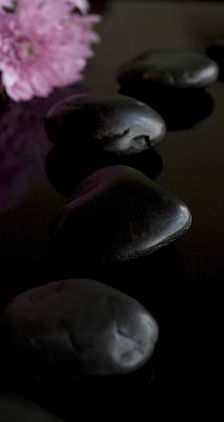

Sleep Yoga & Meditation
Yoga Nidra sequence - practice yoga at home
There are various variants of yoga nidra sequences and the yoga nidra protocol described below is based on several Yoga Nidra protocols as taught by Swami Satyananda Swaraswati of the Bihar school of yoga . A typical protocol may include the following components in this order:
Preparation: the practitioner is instructed to lie down comfortably on a mat in the supine position, feet apart and palms facing upwards. If necessary, the body is covered with a blanket to keep warm and once comfortable, the practitioner is instructed to stay still until the end of the practice (if the supine position is not comfortable other horizontal or sitting positions are permissible). The practitioner is then instructed to focus on external sounds and direct his/her attention from sound to sound (Antar Mouna) in Sanskrit
Relaxation: The practitioner is instructed to scan the entire body and feel if there is any tension in the muscles and then feel the tension dissolving away while relaxing the whole body (part by part or all at once) this component resembles some western muscle relaxation techniques
Resolve (Sankalpa in Sanskrit): The practitioner is instructed to make a wish for any positive change in his/her life, health, relationships etc. and this is repeated three times
Rotation of consciousness: The names of various body parts are called out by the teacher, sequentially in a rapid succession, from top to bottom and from right to left. The practitioner is instructed to direct his/her awareness to the body part called out and to mentally repeat the name of the body part and focus on any sensation there. In yoga nidra, the practitioner is passive and the rate and direction of the body scan is dictated by the teacher or the recording. Arguably, this allows the yoga nidra practitioner to let go further and achieve a deeper level of relaxation
Awareness of the contact between body and floor: The practitioner is instructed to be aware of the contact points between body and floor, whole body at once or part by part
Awareness of subtle body movements: The practitioner is instructed to be aware of muscle twitches or subtle movements in the body in conjunction with the breath
Breath awareness: The practitioner is instructed to direct the awareness to the natural (uncontrolled) breath as it manifests in the movement of the navel, chest, throat, nostrils eyebrow center. Usually this practice is done while mentally counting the breaths. For example, the practitioner maintains focus and counts down from a certain number to zero or vice verse
Awareness of opposing sensations: The practitioner is instructed to sense opposite sensations in the body, such as heat and then cold, lightness and then heaviness, painful and then pleasant sensation etc.
Focusing on the ‘inner space’ (Chidakasha – in Sanskrit): The practitioner is instructed to focus on the inner space between the eyebrows (with the eyes closed) and observe whatever appears there such as colors, patterns etc.
Visualizations: The practitioner is instructed to visualize a rapid sequence of objects such as natural scenery, building, flowers, people, etc. The practitioner tries to visualize them as vividly as possible as they are called out by the teacher
Repeating the Resolve: The practitioner is instructed to repeat the initial resolve (a wish for any positive change in his/her life, health, relationship etc.) three times. At this point in the meditation the practitioner is immersed deeper in the meditation, the mind is calmer and arguably the level of suggestibility to the resolve statement is increased
Movement in time: The practitioner is instructed to mentally review/visualize the events which have occurred during the day
Completion: The practitioner is instructed to gradually become aware of his/her body, the room and its surroundings and thereby finish the practice
